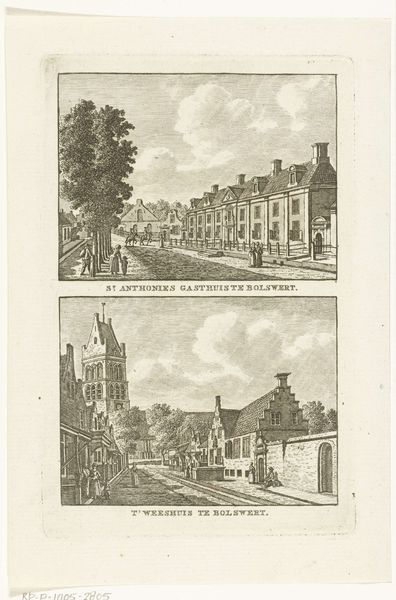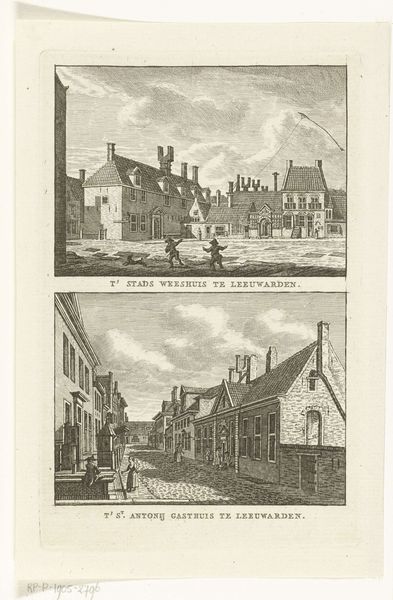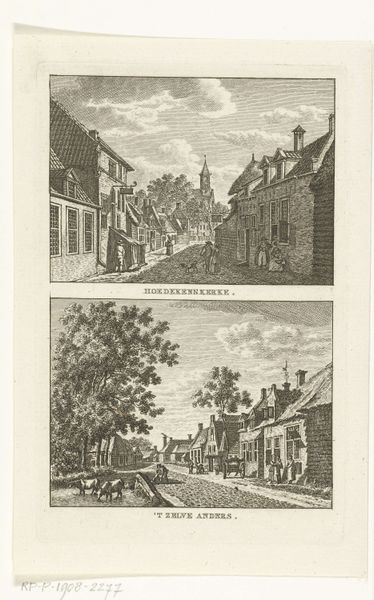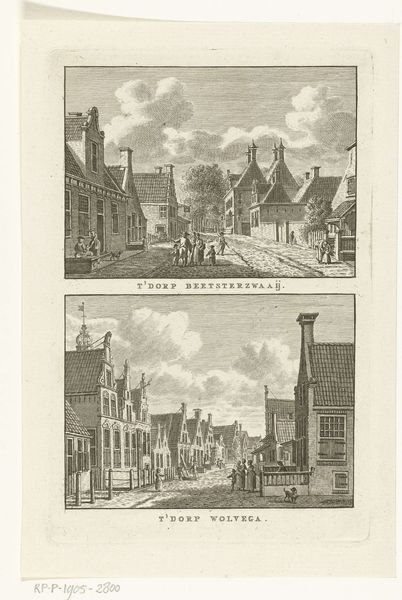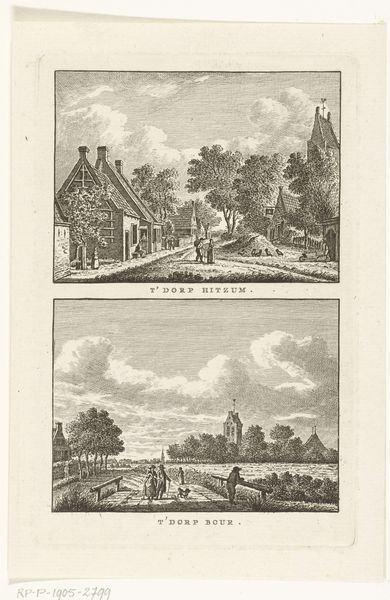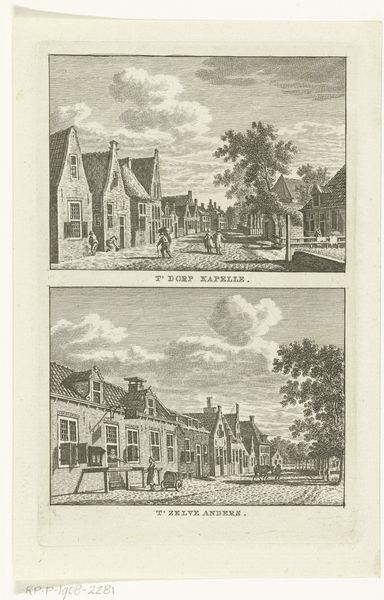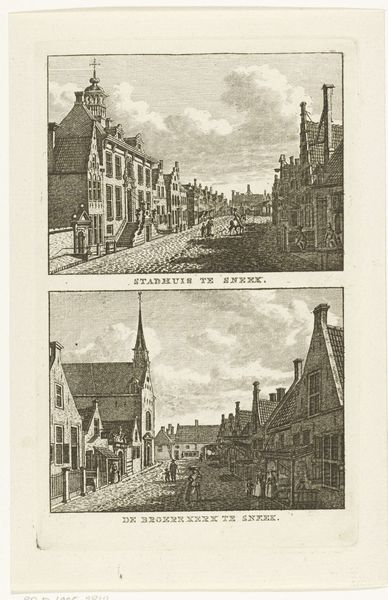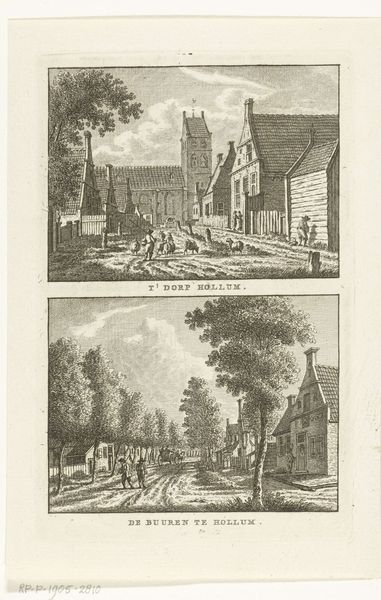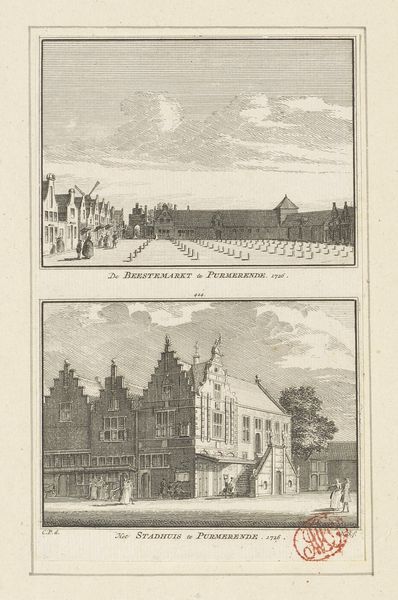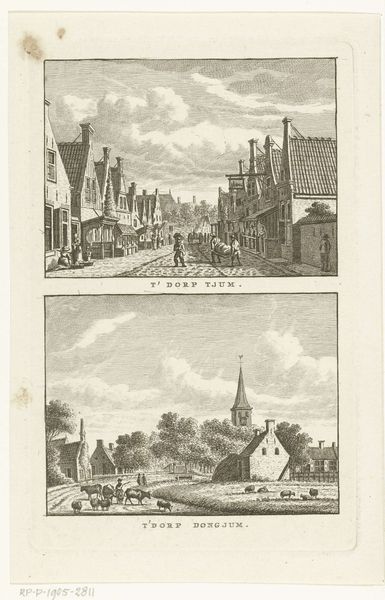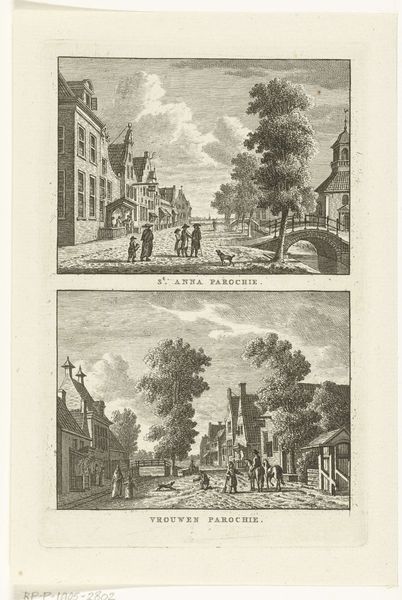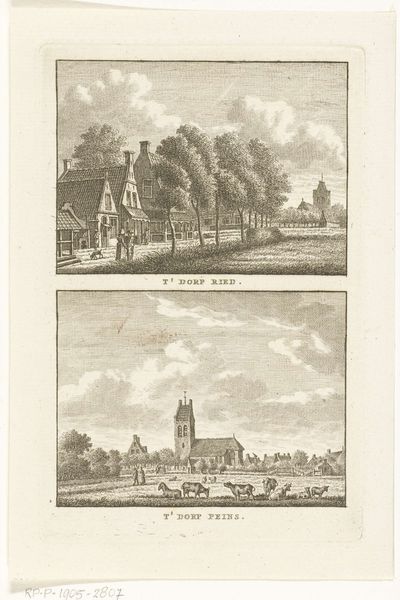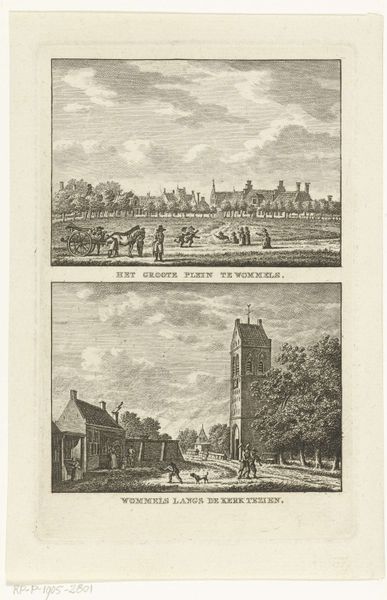
drawing, print, etching, paper
#
drawing
#
neoclacissism
#
dutch-golden-age
# print
#
pen illustration
#
etching
#
old engraving style
#
landscape
#
paper
#
cityscape
#
genre-painting
#
realism
Dimensions: height 170 mm, width 110 mm
Copyright: Rijks Museum: Open Domain
Curator: My first thought is… tranquility. An oddly comforting quietness. It’s that pale light, isn’t it? Editor: Precisely. And these two understated village views by Carel Frederik Bendorp, completed between 1786 and 1792, have an almost sociological precision. Here are two drawings combined on one printed page—etching and pen, I think. “Twee dorpsgezichten te Nes op Ameland” presents two views of the same street in Nes, on the island of Ameland in the Netherlands. Curator: You say precision, I see feeling. Look at those little figures, so ordinary, so human. One is getting water, another carries what could be trade goods in the second scene. There’s almost a folk-song quality to them, a wistful charm. Editor: And those ordinary qualities tell a tale about 18th-century Ameland: its modes of living and social stratification embedded within seemingly simple compositions. What does it mean to represent the everyday, to give it importance and permanence? Consider the rise of the bourgeoisie at the time. This reminds me of Walter Benjamin. Curator: Ah yes, Walter. What would we do without him, haunting our conversations with revolutionary possibilities? But back to Ameland, I find it interesting the contrast between those grave-like stones in the road in the first depiction and their absence in the second. Is this a statement about time? About erasure? Or merely perspective? Editor: A clever observation. I see them too—are these milestones maybe? It’s hard to tell at this scale. It might also comment on the political changes during that time. The Dutch Republic had just fallen. It perhaps hints at the passing of traditions, even amidst seemingly unchanging scenery. A fascinating ambiguity… Curator: Yes, and for all the art historical and socio-political readings we can bring to it, it's these details, so intimately rendered in ink on paper, that reach out across centuries, sparking something wistful inside me. I imagine the island unchanged, still inhabited by these quiet ghosts. Editor: It indeed acts as a poignant testament, freezing fleeting realities—reminding us to look closely at the architecture of place and community, whether we analyze art for the sociopolitical commentary or simply for a ghostly atmosphere. These scenes invite both.
Comments
No comments
Be the first to comment and join the conversation on the ultimate creative platform.
